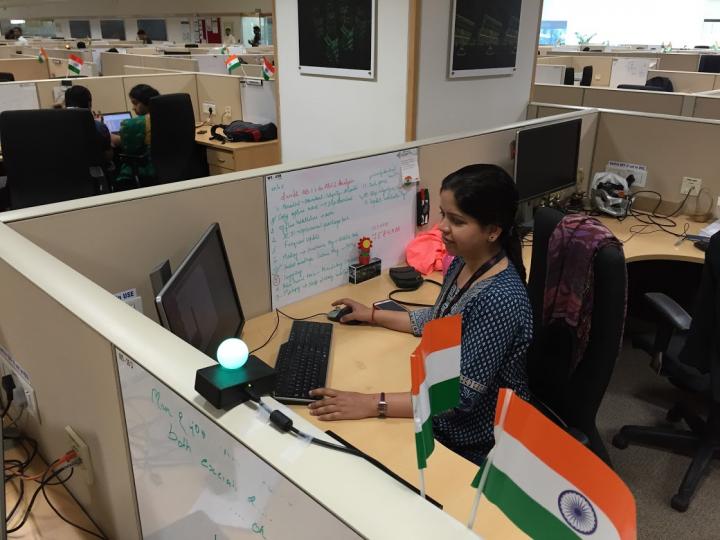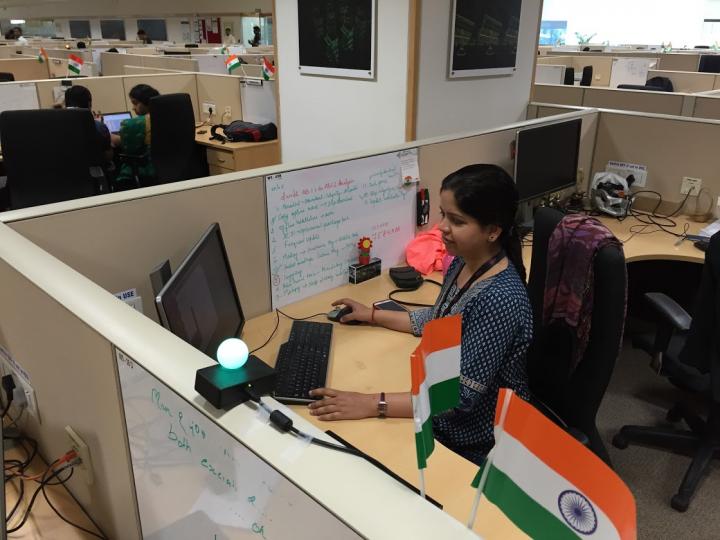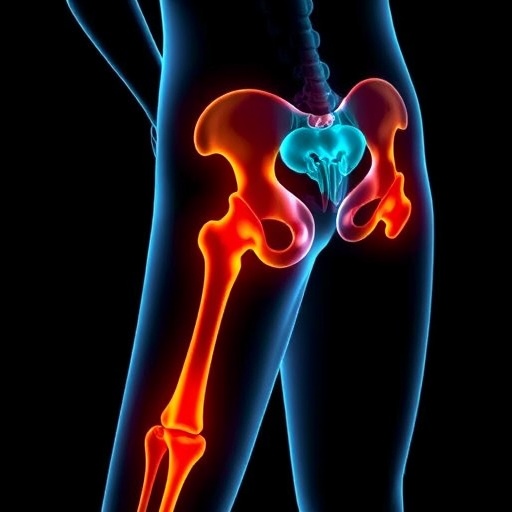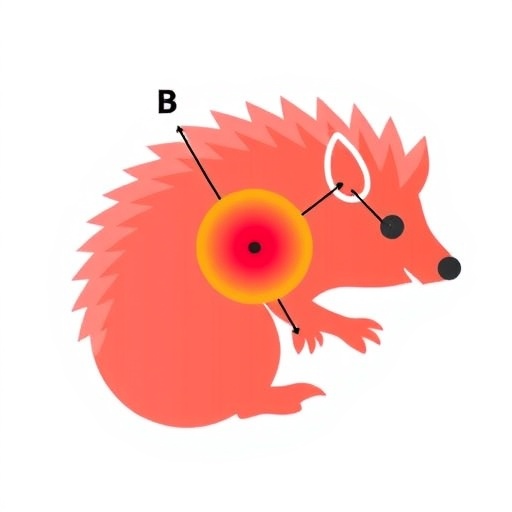
Credit: Thomas Fritz and ABB Inc.
A UBC computer scientist has invented a unique desk light that automatically switches from green to red when you are 'in the zone' and shouldn't be disturbed by colleagues.
"The light is like displaying your Skype status — it tells your colleagues whether you're busy or open for a chat," said Thomas Fritz, an assistant professor at UBC who started work on the invention at the University of Zurich.
The idea for the FlowLight came from working with ABB Inc., an international engineering company, where employees were resorting to putting road safety cones on their desk when they were coding and didn't want to be interrupted.
FlowLight switches between green and red based on your keyboard and mouse activity. Fritz said it is important that the light changes automatically because once someone is focused on a task, stopping to manually turn on a light, close your office door or put a cone on your desk is disruptive to the work and cumbersome.
"When you're interrupted, it can take a long time to get back into your work and it's more likely you'll make mistakes," said Fritz.
The light was tested with about 450 employees from ABB with positive results. Not only did the employees report fewer interruptions, it also changed the office culture so that people were more respectful of each other's time and aware of when they could interrupt a colleague. Some employees even reported that the lights motivated them to finish their work faster.
FlowLight is designed to only turn red for a maximum amount of time each day despite how hard someone works. That feature is key to preventing employees from feeling guilty for not working hard or getting competitive with one another, Fritz noted.
Of course, keyboard and mouse activity are not the only indications that someone is hard at work. Recently, Fritz and his PhD student Manuela Zuger from the University of Zurich, have tested a more advanced version of the FlowLight with companies in Vancouver to determine whether it can be improved by using biometric sensors to detect heart rate variability, pupil dilation, eye blinks or even brainwave activity. For this research, they are also collaborating with two Canadian companies that develop biometric sensors, Interaxon and Mio Global.
###
The results from the initial FlowLight trial with ABB will be presented Monday in Denver, Colorado at the CHI 2017, an Association for Computing Machinery conference: https://chi2017.acm.org/index.html
The FlowLight was developed with David Shepherd at ABB, PhD students Zuger and Andre Meyer, as well as researchers at ABB Christopher Corley, Boyang Li, Vinay Augustine, Patrick Francis, Nicolas Kraft and Will Snipes.
Media Contact
Heather Amos
[email protected]
604-822-3213
@UBCnews
http://www.ubc.ca
############
Story Source: Materials provided by Scienmag





